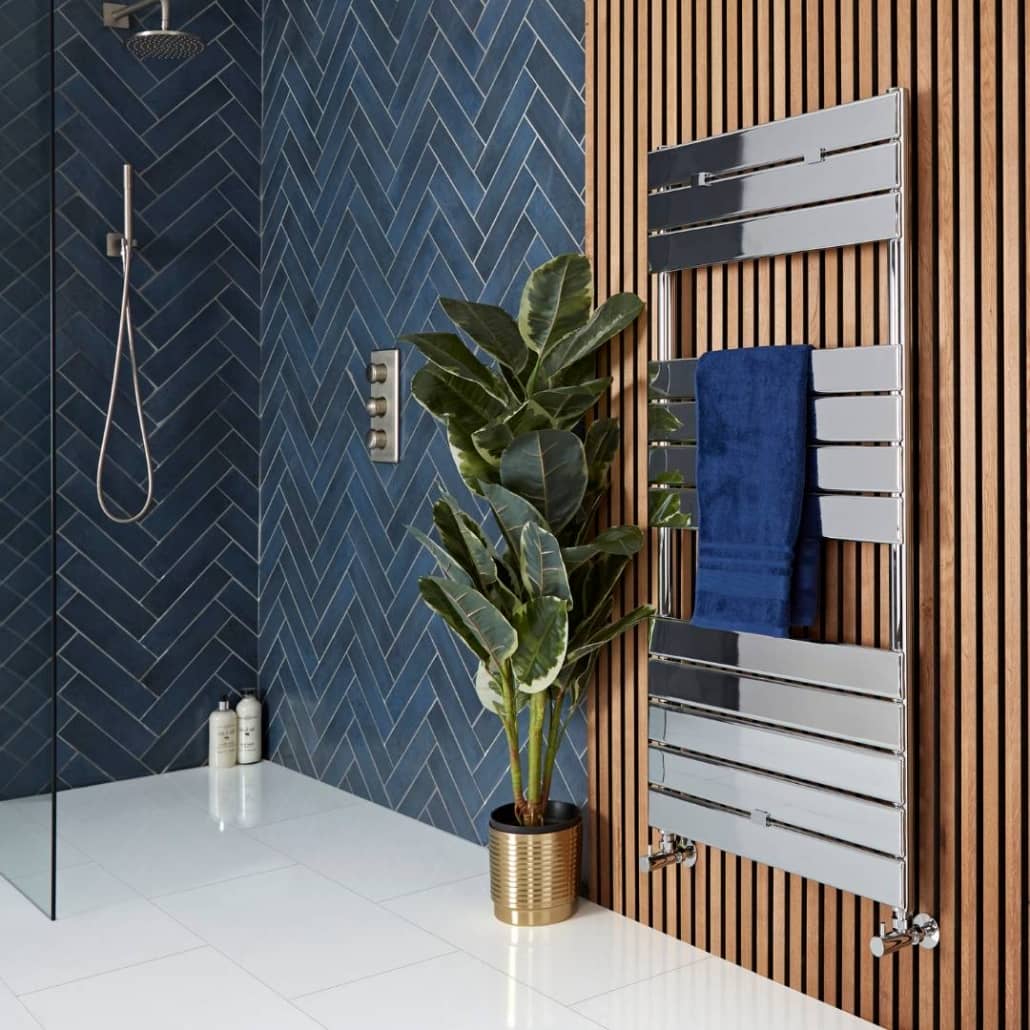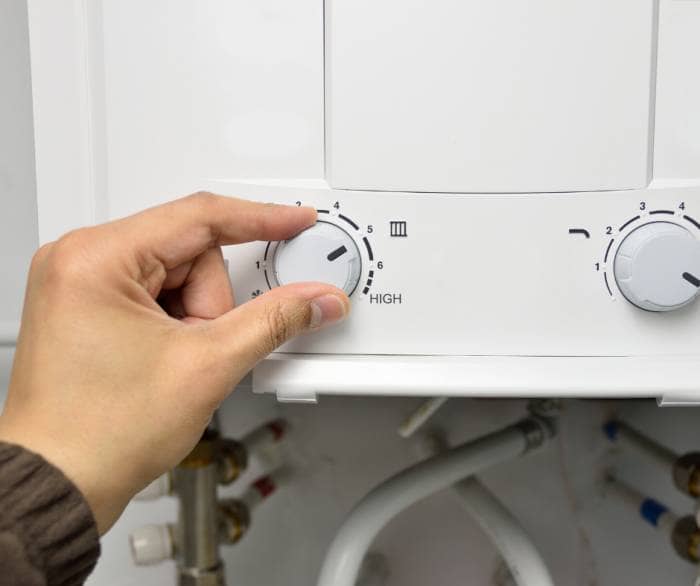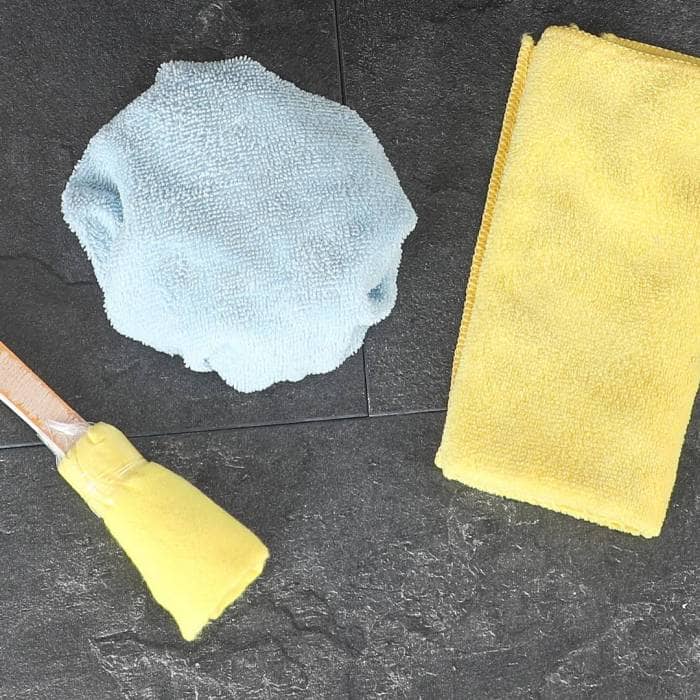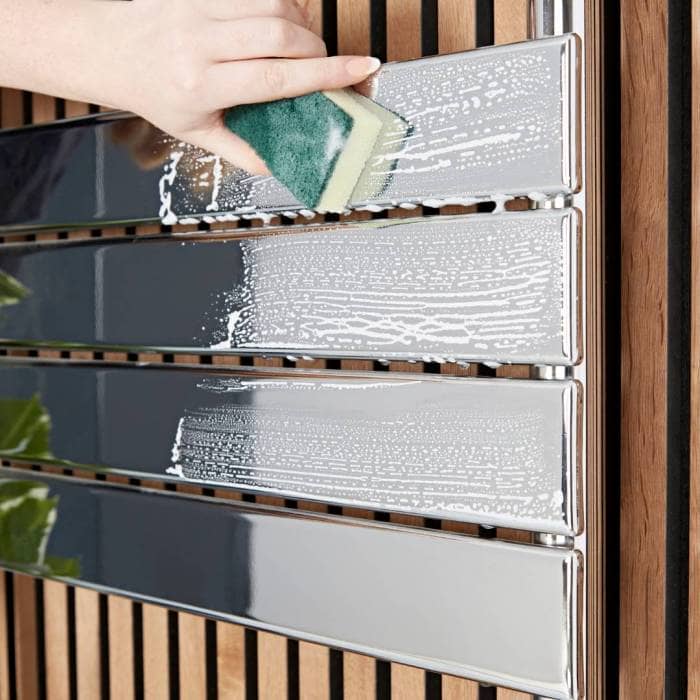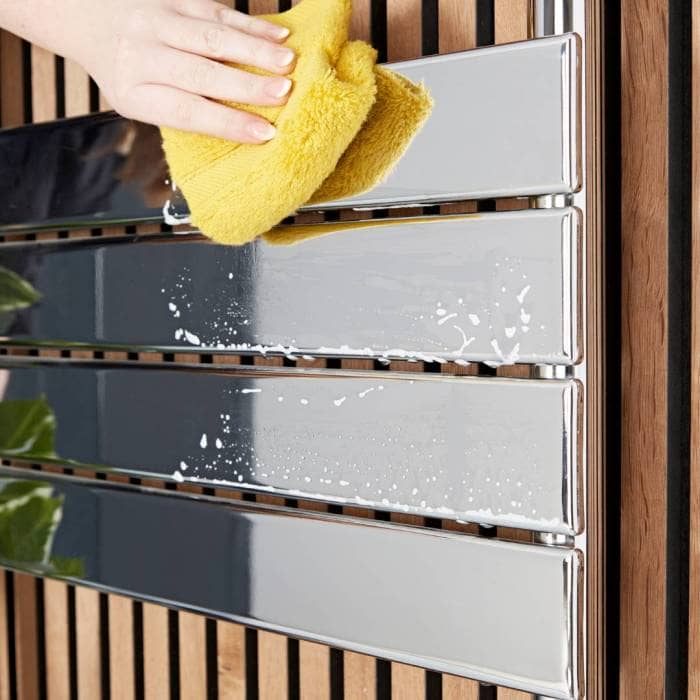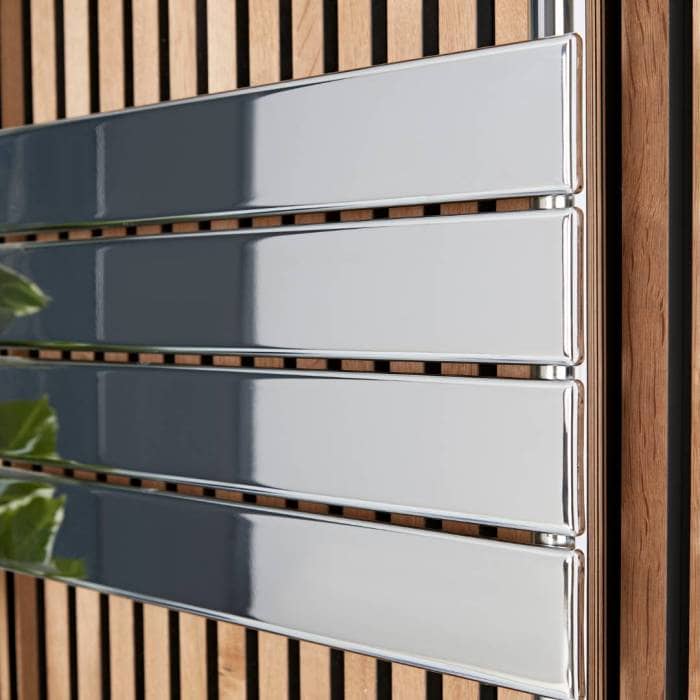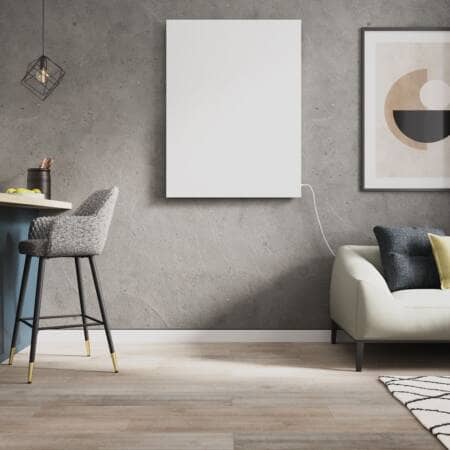As you well know, the bathroom is a warm, moist environment. Unfortunately, this means that it’s very easy for soap scum, mildew and water marks to build up and spoil the shine of your stainless steel fixtures with a chrome finish.
But if your chrome bathroom radiator has lost some of its gleaming beauty, fear not!
The good news is, it is also an easy job to remove the stains and reclaim the original sparkle. Plus, you probably have most of the cleaning products you need in your cupboard!
Here’s what you’ll need to clean your chrome radiator:
- Radiator brush or duster
- Four Microfibre cloths
- Old toothbrush
- Soap/white vinegar/lemon
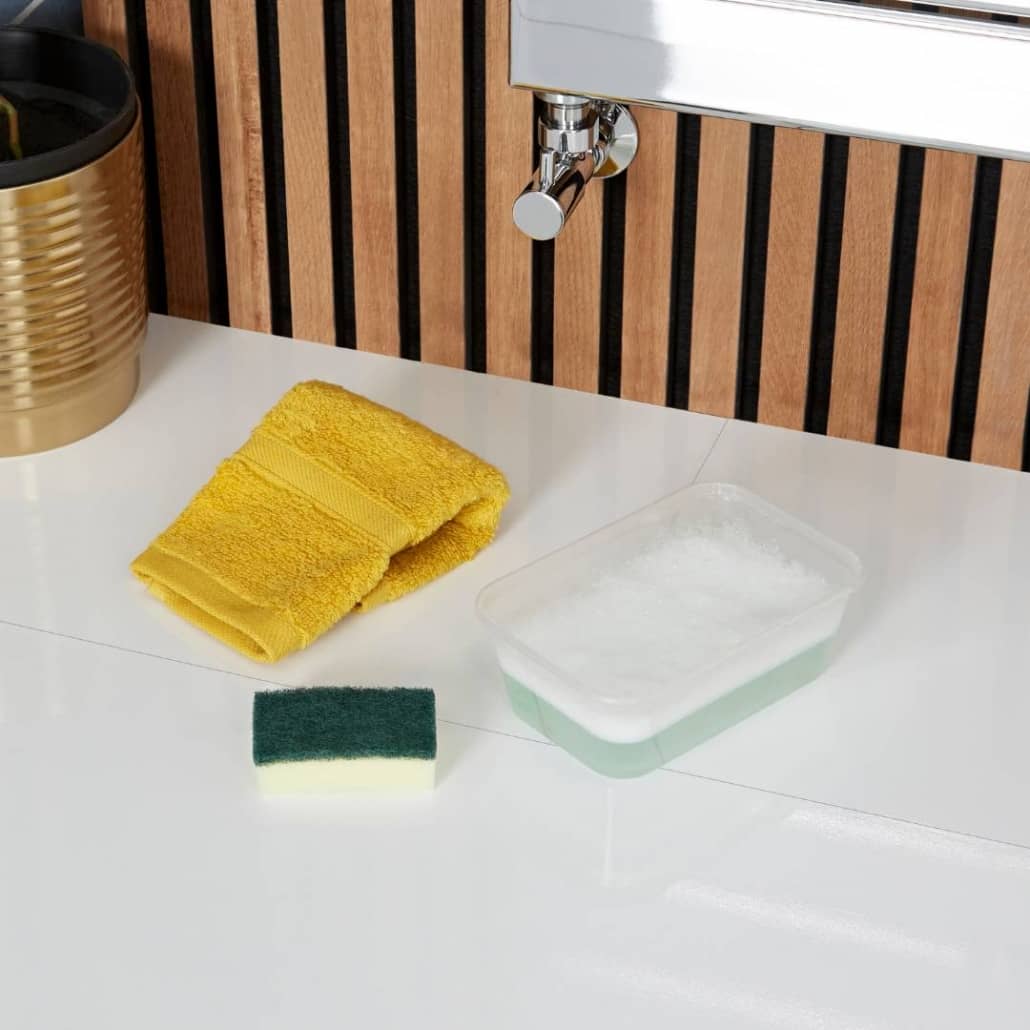
How to clean chrome bathroom radiators
Time needed: 10 minutes
Before you start, please bear in mind that this cleaning guide is for general maintenance and not for removing rust from your radiator. To get rid of the rust you will need some additional tools like aluminium foil.
- Turn the heating off
Like with any radiator related job, make sure you turn the heating off and let your radiators cool down to avoid any accidents.
- Remove the dust and debris
Before you start using any cleaning products, make sure you remove any dust with a radiator brush, a duster or a dry microfibre cloth.
Dirt and dust will dull the shine on your chrome radiator, and isn’t the polished finish the reason you loved it in the first place?
Radiator brushes are great for chrome panel radiators or ladder towel rails to remove the trapped dust between the gaps.
But if you don’t have a radiator brush, microfibre cloths are amazing dust collectors and fingerprint removers with their ultra fine textured fibre feel.
After removing the dust, set this dirty cloth aside to make sure you don’t use it again later! - Wipe down the radiator with your cleaning solution
Use a new microfibre cloth and a cleaning solution of your choice to wipe down the chrome radiator.
For ladder style chrome towel radiators, an old toothbrush is a great way to clean between the rails and achieve an even brighter finish.
There are lots of different options when it comes to chrome cleaners.
One of the most effective is a simple 50:50 solution of water and white vinegar. You can pour your mixture into a spray bottle to apply the solution, or simply dip your cloth into a bowl of the liquid. The acidic vinegar is great for getting rid of those irritating calcium deposits from hard water droplets.
Other household items that remove stubborn stains, bacteria and maximise the mirrored shine of your chrome radiators and heated towel rails include soapy water, baking soda and lemon juice, anti bac wipes, and cola!
You can even cut a lemon in half and rub it directly onto the radiator. With a bit of elbow grease the citrus juice will clean the surface beautifully and leave a fresh fruity scent.
If you prefer manufactured bathroom cleaning products, just make sure to check the label that the product is suitable for chrome plating to avoid damaging the finish.
After cleaning the surface, rise off any remaining cleaner with some fresh water and a damp cloth.
Play around with different cleaning products to see what you think works best on your chrome bathroom radiator. A small amount of baby oil is also known to boost the polished shine!
Top tip: Distilled/De-Ionised water is great for preventing streak marks and can be found in most supermarkets. - Dry the radiator
Once you have given the radiator a good clean, the next thing you need to do is dry the surface with another microfibre cloth.
This will ensure that any remaining cleaning solution will not leave any drip marks or smudges and ruin your hard work. - Buff the radiator
Finally, take another dry cloth and rub the radiator in a circular motion to buff the surface. This will create an immaculate shine and make the chrome finish look good as new!
Chrome cleaning routine
Just like every other part of our homes, the best way to prevent any damage to your chrome radiator surface is the unavoidable task of regular cleaning!
The more you keep on top of it, the more beautiful and sparkly your radiator and chrome fixtures will be in the long run.
Here’s how to keep your chrome radiator clean:
- Wipe down your chrome radiator and other chrome bathroom fixtures every day with a dry microfibre cloth. This will prevent any condensation marks from building up and causing corrosion.
- Give your chrome radiator a good clean with soap and water once a week following our step by step method.
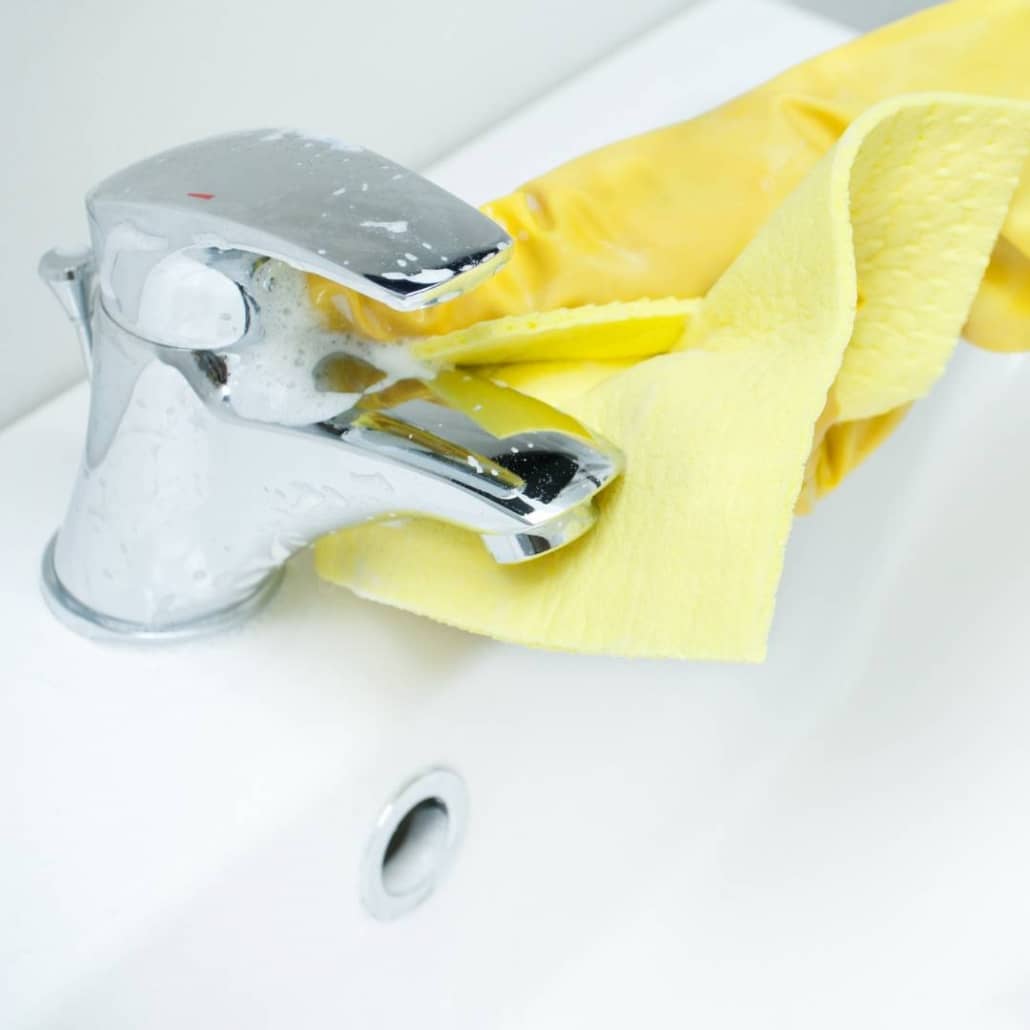
What not to do
Chrome is a hard-wearing finish, but like with most metal plating it is important to stay away from harsh materials and cleaners that may scratch the polished surface.
Avoid cleaning chrome bathroom radiators with:
- Scouring powder
- Steel wool
- Abrasive calcium-dissolving detergent containing alcohol or other harsh chemicals
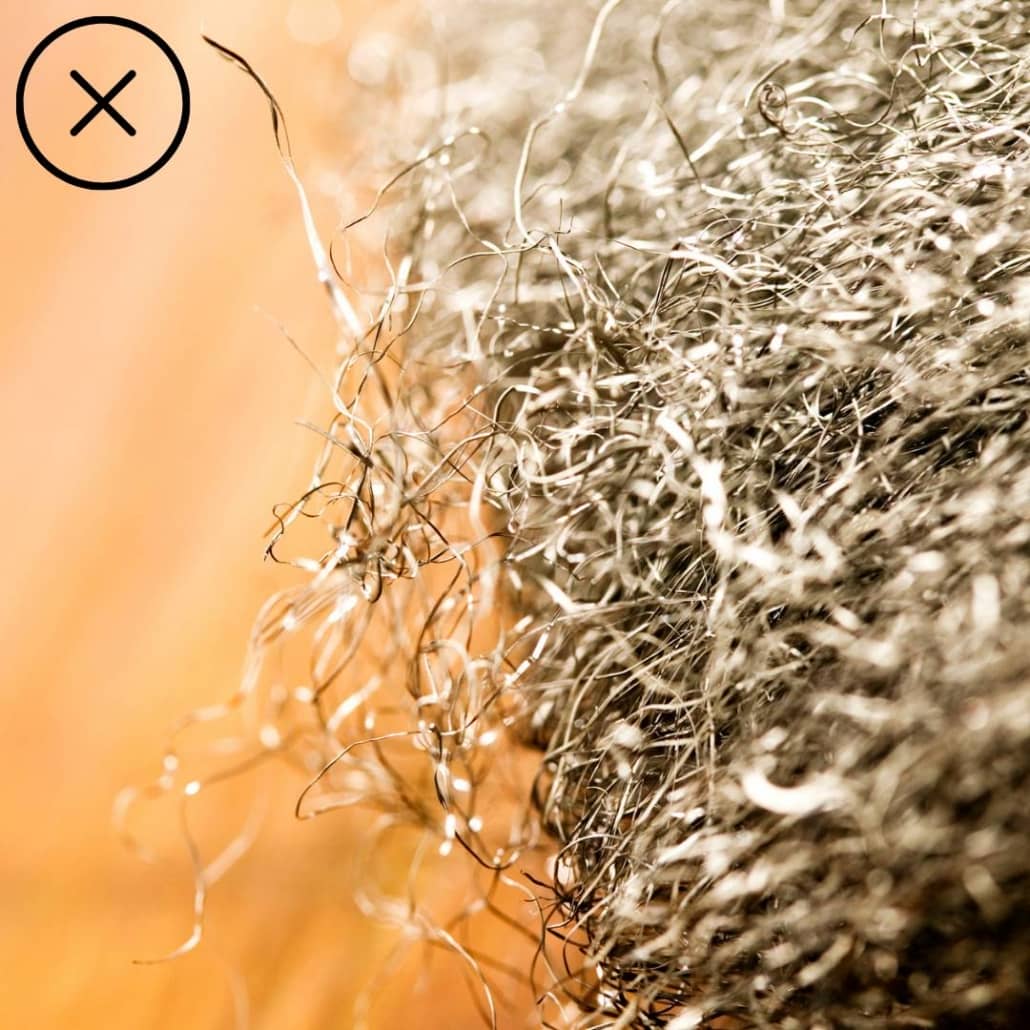
We hope this quick guide has helped you to bring back the original shine on your polished chrome radiator! Head over to our complete cleaning guide for more info and expert advice on how to clean and look after your radiators.
Frequently Asked Questions
To begin with, you need to make sure your radiator is turned off as a safety precaution before cleaning it.
Be careful to eradicate dust from between any radiator panels, so the component can perform to its full capacity without the distribution of heat being blocked at all.
You can do so by creating a cleaning device from a thin stick or wooden plank, and attaching a cloth or towel at the end. Such an item will enable you to reach awkward, narrow crevasses and get rid of dust and dirt that might cause blockages.
As it pertains to the radiator surface itself, you can use a soapy water-laden sponge to combat markings or stains.
For a more detailed insight, take a look at our dedicated blog, How To Clean A Radiator.
If your chrome bathroom radiator has a couple of fine scratches, you should be able to remove them using jewelers rouge or chrome polish.
Apply the polish to a microfibre cloth and rub the scratched area in a circular motion. Then remove the excess polish with a dry microfibre cloth and buff the surface again in a circular motion. Repeat the process as needed.
Unfortunately, if the scratches are too deep, trying to remove them will only damage the chrome plating even further.
If that is the case, why not consider upgrading to one of our stylish chrome bathroom radiators from our beautiful collection?
Rust, unfortunately, is a common problem for bathroom radiators because the bathroom is an environment where this type of corrosion thrives!
The combination of metal and oxygen with water or air moisture causes a chemical reaction which forms rust.
So, combine a steamy bathroom with a hot metal radiator and damp towels and you’ve got all the ingredients for a rusty radiator or towel rail.
The good news is, external bathroom radiator rust can be easily removed with some white vinegar and a cloth. Regular cleaning with your usual bathroom products can also help prevent rust forming on your radiators by removing the moisture and bacteria.
The build up of sludge in your heating system can also cause the bathroom radiator to rust from the inside and create little holes which could turn into leaks.
If that is the case, your system may require a power flush.
For more information on how to combat radiator corrosion and rust, head to our guide, How To Combat Radiator Corrosion.
Firstly, you should ensure your radiator is switched off for safety reasons before commencing with cleaning your radiator.
It is important to remove dust from in between radiator panels, so as to not prevent the distribution of heat, and ensure they are performing to optimal capacity.
To do so, you should fashion a cleaning device from a stick or thin plank, with a towel or cloth wrapped around the end. This will allow you to reach into narrow crevasses and eliminate dirt and dust that could cause potential blockages.
With regards to the actual radiator surface, you can use a sponge and some soapy water to tackle any stains or markings.
Get more radiator cleaning advice in our full guide, How to Clean a Radiator.
Jess has a passion for interior design and wants to inspire people to look at radiators as home decor. She enjoys keeping on top of the latest design and heating trends to ensure the Advice Centre has all the information and inspiration homeowners need to make the best choice for them.

